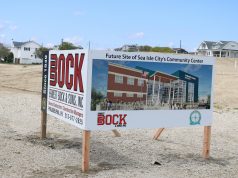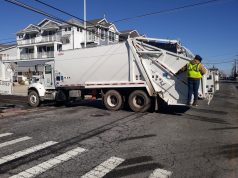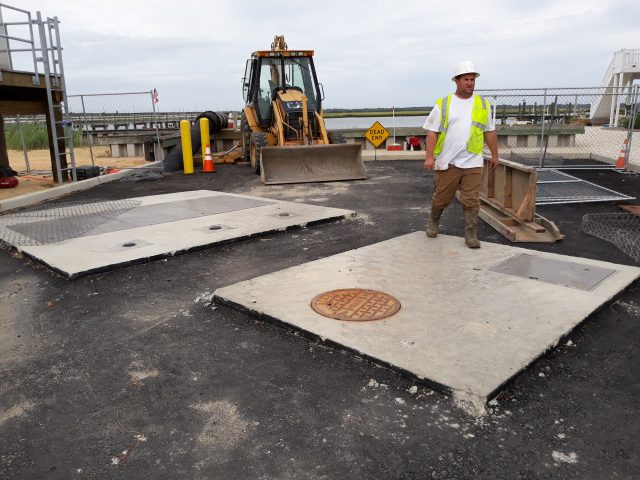
By DONALD WITTKOWSKI
Tom Ruf climbed up the stairs leading to a big metal electrical box, opened a panel and then flipped a switch.
“You won’t hear anything,” Ruf said.
He was right. There was complete silence.
With little fanfare, Sea Isle City’s first ever pumping station was working.
Make no mistake, though, the nearly $800,000 project at the bay end of 38th Street at Sounds Avenue represents a key part of Sea Isle City’s strategy to fight flooding on the low-lying barrier island.
The pumping station was built for Sea Isle by Mathis Construction Co. Inc. of Little Egg Harbor Township. Ruf serves as the company’s supervisor on the project.
Equipped with three pumps capable of pumping 900 gallons of water per minute, the project is designed to intercept floodwater and channel it back into the bay much faster than it would normally take to drain off the streets after a coastal storm.
“If you have a major flooding event, it will get the water out much quicker,” assured Andrew Previti, the city’s engineer.
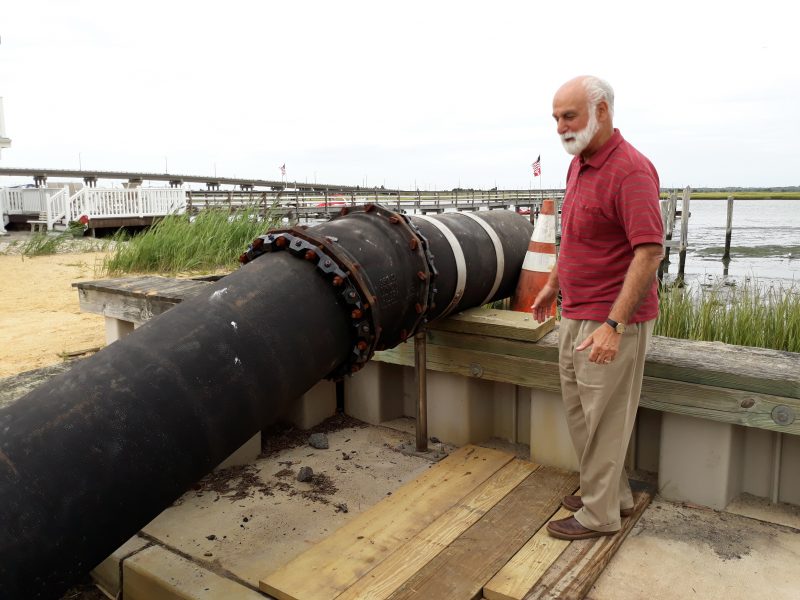
Immediately, the pumping station will begin protecting the flood-prone neighborhood adjacent to the bay at 38th Street and Sounds Avenue. Long frustrated with the stormwater that inundates their neighborhood, homeowners on 38th Street and Sounds Avenue had been urging the city to install a pumping station for the past year.
The pumping station and other flood-control improvements on 38th Street and Sounds Avenue have broader implications. The neighborhood will serve as a model of how city officials intend to protect the entire island from coastal storms in years to come.
A flooding study conducted last year by Previti’s engineering company, Maser Consulting P.A., recommended pumping stations for 10 areas throughout Sea Isle. However, they are expensive and require room to build them. The next area to get one could be between 44th and 48th streets from Landis Avenue to the bay, Previti said.
Eight of the 10 areas recommended for pumping stations in Sea Isle are tied into Cape May County’s drainage network. That raises the possibility of funding partnerships between Sea Isle and the county to build the projects, Previti noted.
Previti acknowledged that Sea Isle will never be completely immune from flooding, no matter how much money it spends and how many projects it builds over the years. The idea is to target areas of the city that are most vulnerable to stormwater to reduce the flooding problem, particularly along the bayfront, he explained.
Pumping stations already are being used with success in a number of neighboring shore towns, including Ocean City and Avalon.
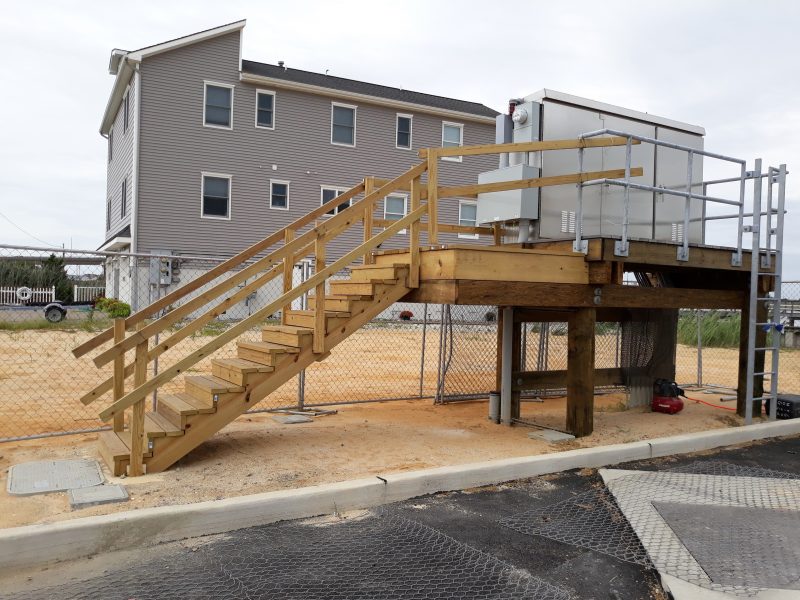
Sea Isle’s pumping station was recently put to the test – and worked – during a recent storm that caused some flooding, Previti said.
The three pumps comprising the station are located under the street, completely out of view from homeowners. An 18-foot-deep hole was dug for the pumping station’s chamber and is now covered with asphalt.
Other than a large drainage pipe that feeds floodwater into the bay, the only major thing that is visible of the pumping station is a box-like electrical panel mounted on a 10-foot-high platform that resembles a staircase. The panel contains the controls for the pumping station.
“The mechanical parts on the platform are elevated above floodwaters. The staircase gives electric meter readers and other techs access to the platform,” city spokeswoman Katherine Custer said.
Sensors known as “floats” detect rising stormwater and activate the pumps. Depending on the severity of the flooding, one, two or all three of the pumps will be put into operation to clear stormwater from the streets, Ruf said.
The pumping station is the latest in a series of flood-mitigation projects for the neighborhood surrounding 38th Street and Sounds Avenue.
“This is a very low-lying area,” Previti said, noting that Sounds Avenue is three feet lower than Cini Street just a block away.
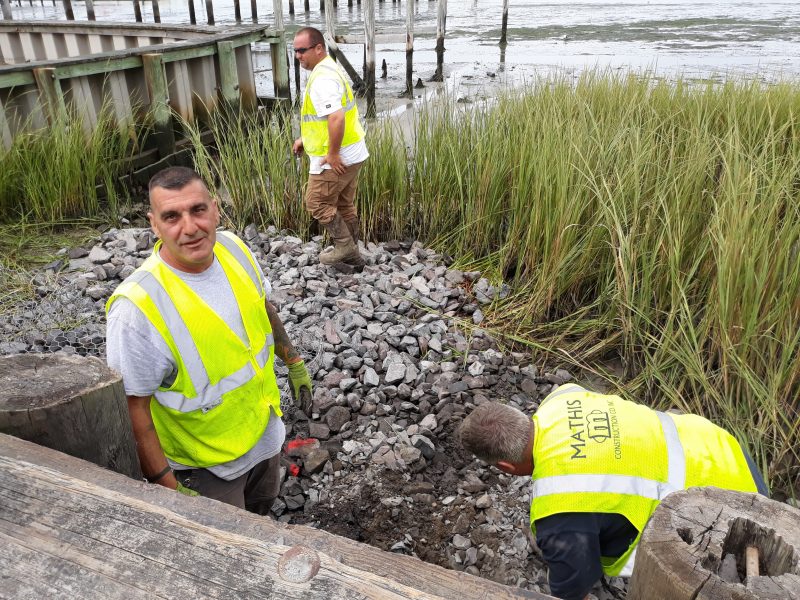
Last summer, the city completed the repaving of 38th Street from Central Avenue to Sounds Avenue. The street was regraded and repaved to even out its undulating surface caused by the construction of a new stormwater pipe leading to the bay.
Part of 38th Street also has an approximately 4-foot-high rock wall that is designed to hold back stormwater surging out of the surrounding marshlands. Primarily, the rock wall runs along both sides of 38th Street from Sounds Avenue heading toward Cini Street. It also extends to the dirt end of Sounds Avenue.


